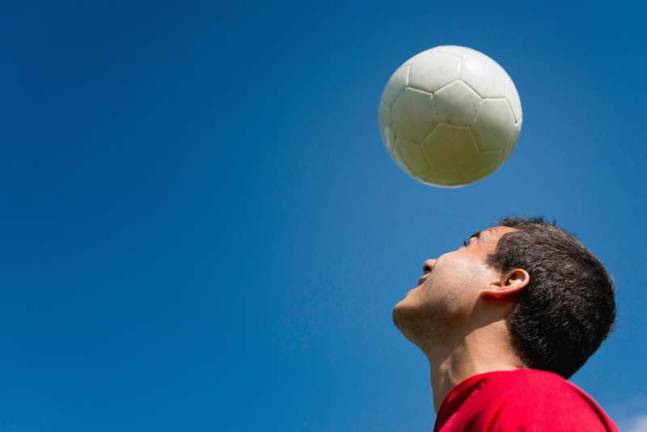Heading the ball may not make better soccer players

While football has been in the news over the last several years with regard to concussions, it’s a concern in other sports as well. Take soccer for example.
Players are allowed to play the ball with their head, which potentially causes damage if the action is repeated over and over again throughout years of playing the sport.
It’s of such concern that The Safer Soccer Campaign issued a report in 2015 claiming 30 percent of concussions in soccer are caused by heading the ball or making an attempt to do so and colliding with another player, the ball or the ground.
The Safer Soccer campaign successfully lobbied U.S. Soccer to adopt a series of safety initiatives that will alter the rules to prohibit players 10 and younger from heading the ball. It also will reduce headers in practice for players between the ages 11 and 13.
The regulations will be mandatory for youth national teams and academies, and applies to Major League Soccer youth club teams.
The report said that 11 percent of children who suffer a concussion still have symptoms three months later.
Local soccer leagues have taken heed and adjusted their rules accordingly.
“There is no heading of the ball by any player younger than 11 in travel or recreation programs,” said Craig Shield, president of the Warwick Soccer Club. “Players 11 and 12 years old are allowed to have half hour of practice per week with a maximum to learn proper technique in a low pressure environment.”
Shields went on to say heading is allowed at the age of 13 and older.
Any player suspected of having a concussion by coach at practice or a referee during league play will be suspended from play and will have to provide written medical clearance to return to practice or play.
The Vernon Soccer Club in New Jersey follows the protocol set forth by the Center for Disease Control in its Heads Up Concussion in Youth Sports Initiative. The Vernon Club provides online training courses to coaches on how to keep athletes safe from concussions and how to spot concussion symptoms in athletes, such as appearing dazed or stunned, clumsy movements or behavioral changes.
Studies into boxing and football have suggested that the earlier a child is subjected to brain trauma, the greater their risk of long-term problems. The report states that neck strength may help reduce head acceleration caused by an impact and since younger athletes tend to have weaker necks, that could put a child at higher risk for concussion.
Some believe, including renowned soccer players such as Brandi Chastain and Cindy Parlow Cone, that limiting youths heading of the ball not only keeps their brains healthier, but also could lead to better soccer skills.
A report from Safer Soccer quotes Chastain as saying she would prefer her players focused solely on foot skills and Cone suggested heading skills can be learned at the high school level, and at younger levels the focus should be on coordination, technical skills and spatial awareness.
“Delaying the teaching of heading skills while still preparing players for heading by teaching jumping and landing and strengthening the neck not only will help make the sport safer but also is developmentally appropriate,” Cone said in the report. The report estimates that by delaying the introduction of heading until high school will prevent 100,000 concussions among middle school players every three years.